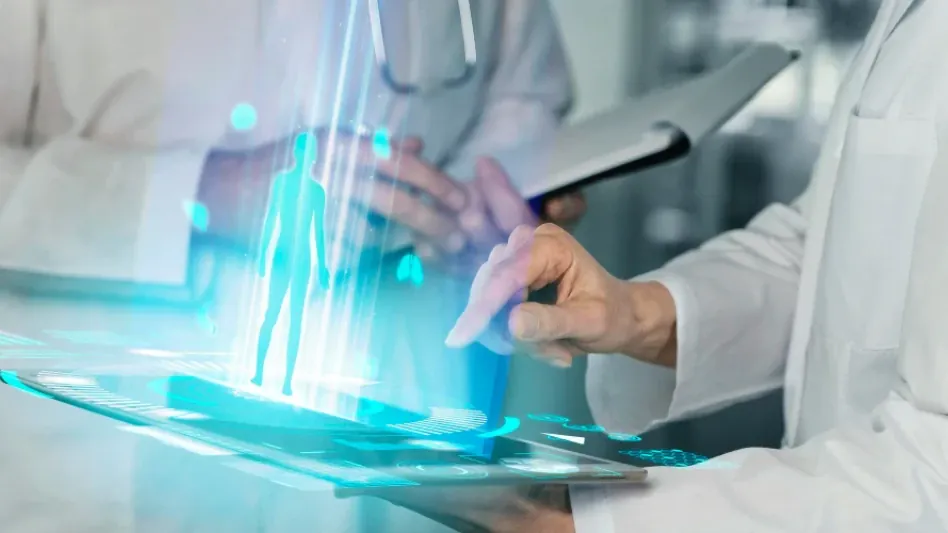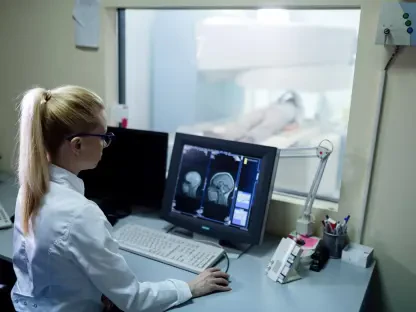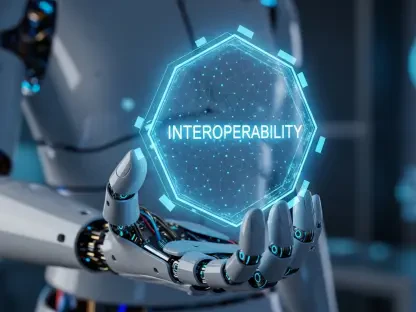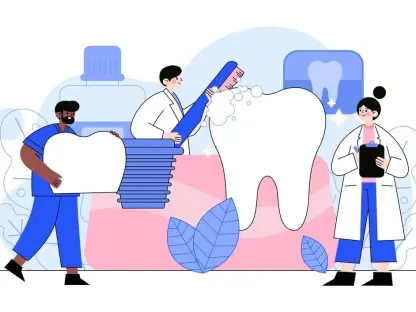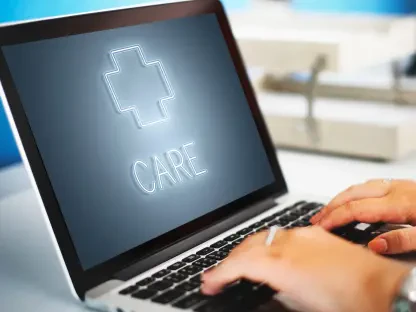Smart healthcare technologies are set to revolutionize the way patient care is delivered by 2035. With advancements in IoT, AI, robotics, and data analytics, the healthcare landscape is poised for significant transformation. This article delves into the various ways these technologies will reshape patient care, enhance hospital operations, and improve medical outcomes globally.
Technological Innovations in Patient Care
IoT and Wearable Health Devices
IoT devices and wearable health technologies are becoming integral to patient care. These devices enable continuous monitoring of vital signs such as heart rate, blood pressure, and glucose levels, providing real-time data to healthcare providers. The ability to track these metrics outside of clinical settings allows for more comprehensive and proactive management of chronic diseases. Patients can share this data seamlessly with their healthcare providers, ensuring timely interventions whenever anomalies are detected, thus mitigating risks before they escalate.
Wearable health devices like smartwatches and fitness trackers empower patients to take control of their health. They offer features such as ECG readings, sleep analysis, and physical activity tracking, promoting preventive care and early intervention. The information gathered by these devices not only helps in personal health management but also contributes significantly to research and population health studies. These user-friendly devices are designed to blend into everyday life with minimal disruption, making them accessible to a broad audience, including the elderly, who can benefit immensely from such continuous health monitoring.
AI in Diagnostics and Treatment
AI technologies are transforming diagnostics by enabling early disease detection and accurate assessments. Machine learning algorithms analyze medical data to predict disease progression and suggest optimal treatment plans. This leap in diagnostics means that conditions can be identified earlier, often before symptoms present, resulting in a higher success rate of treatments and better patient prognoses. AI-driven tools are particularly effective in recognizing patterns that might be missed by the human eye, making them indispensable in the early detection of cancers and other life-threatening diseases.
AI-driven imaging systems assist radiologists in interpreting medical scans with higher accuracy, reducing the likelihood of diagnostic errors. These advancements are crucial in enhancing patient outcomes and streamlining clinical workflows. Moreover, AI in treatment planning supports personalized medicine, where therapeutic strategies are tailored to the individual genetic makeup of each patient. This customization maximizes efficacy and minimizes adverse effects. AI’s ability to continuously learn and improve ensures that diagnostic and treatment processes become increasingly refined, benefiting healthcare providers and patients alike.
Remote Healthcare Services
Telemedicine and Virtual Consultations
Telemedicine platforms have gained prominence, especially during the COVID-19 pandemic. These platforms enable remote consultations, reducing the need for physical visits and making healthcare more accessible. Patients in remote or underserved regions, who previously had limited access to medical care, can now connect with specialists and receive timely consultations from the comfort of their homes. This accessibility translates to earlier diagnoses, more consistent follow-ups, and better overall health outcomes.
Virtual health assessments and e-prescriptions are becoming common, providing convenience to patients and reducing the burden on healthcare facilities. Telemedicine is particularly beneficial for underserved areas, ensuring that patients receive timely care. Beyond consultations, telemedicine services are expanding to include remote diagnostics, where patients can use home devices under professional guidance to perform tests typically done in a clinic. This expansion reduces the workload of healthcare facilities and allows for more comprehensive and continuous patient monitoring, ultimately providing a higher standard of care.
Remote Patient Monitoring (RPM)
Remote patient monitoring tools are crucial in managing chronic conditions and post-operative care. These tools allow healthcare providers to track patients’ health remotely, ensuring proactive care and reducing hospital readmissions. Continuous monitoring through devices like blood pressure cuffs, glucose monitors, and heart rate trackers allows caregivers to receive real-time data, fostering a proactive approach to treatment. This is especially critical for patients with chronic conditions, where persistent oversight can help in tweaking treatment plans and preventing complications.
RPM devices, such as continuous glucose monitors and remote cardiac monitors, provide valuable data that aids in personalized treatment plans and timely interventions. By leveraging this data, healthcare providers can adjust medications, recommend lifestyle changes, and take other necessary actions to manage a patient’s health more effectively. This kind of continuous care is especially beneficial in the rehabilitation phase post-surgery or for managing long-term chronic conditions like diabetes or heart disease, where constant vigilance can significantly impact patient outcomes.
Robotics and Automation in Healthcare
Robotic Surgery Systems
Robotic surgery systems are revolutionizing surgical procedures by enhancing precision and reducing recovery times. These systems assist surgeons in performing complex surgeries with minimal invasiveness. The precision of robotic systems means smaller incisions, which translates to less pain, reduced risk of infection, and quicker recovery times for patients. Surgeons can perform delicate procedures with greater control and flexibility, access areas of the body that would be challenging with traditional methods, and even correct for tremors, which is vital in intricate operations.
The integration of AI in robotic surgery further improves outcomes by providing real-time data and predictive analytics during procedures. This technology is set to become a standard in operating rooms worldwide. With AI, robotic systems can adapt in real-time, providing surgeons with critical information and suggestions, improving the overall safety and efficacy of the procedures. As technology progresses, the potential for fully autonomous robotic surgeries becomes a tangible possibility, which could be groundbreaking for the future of complex surgical treatments.
Automation in Hospital Operations
Robotic process automation (RPA) is streamlining administrative tasks in healthcare facilities. Automation of tasks such as patient scheduling, billing, and inventory management reduces operational costs and improves efficiency. Tasks that are routine and repetitive are now completed quickly and accurately without the risk of human error. This allows healthcare staff to focus more on patient care and other critical responsibilities, improving the overall patient experience.
Smart hospital infrastructure, including integrated systems for resource management and patient monitoring, enhances care quality and optimizes hospital workflows. Automation in hospital operations also ensures more efficient use of resources, from better managing patient flow to optimizing supply chain logistics, thereby reducing wasted resources and time. With the continuous evolution of AI and automation technologies, hospitals can expect further improvements in operational efficiency and patient care quality, setting new standards in healthcare delivery.
Data-Driven Healthcare
Big Data Analytics
Big data analytics play a pivotal role in modern healthcare. By analyzing vast amounts of health data, healthcare providers can derive insights for informed decision-making and optimized treatments. Predictive analytics enable early identification of disease outbreaks, risk factors for chronic diseases, and trends in patient visits, which is invaluable for public health planning and resource allocation.
Predictive analytics and natural language processing (NLP) are enabling earlier disease detection and personalized treatments, improving patient outcomes and reducing healthcare costs. The ability to synthesize large datasets into actionable insights helps in tailoring treatments specific to patient profiles, enhancing the effectiveness of interventions. For instance, analytics can predict which patients are at higher risk of readmission, allowing providers to take preventative steps to improve their care and prevent costly hospital stays.
Blockchain for Health Data Security
Blockchain technology is being adopted to enhance the security and privacy of health data. By providing a secure and transparent way to store and share patient information, blockchain addresses data breaches and ensures compliance with regulations. This distributed ledger technology ensures that patient records are immutable and tamper-proof, fostering trust in the accuracy and confidentiality of medical data.
The integration of blockchain in healthcare is expected to build trust among patients and improve the overall management of health data. Blockchain also facilitates secure and efficient data sharing between different healthcare providers, which is crucial for coordinated, patient-centered care. As healthcare systems become more digital, robust security measures will be essential to protect sensitive patient information from cyber threats. Blockchain’s transparency and security are pivotal in establishing a reliable and efficient digital healthcare infrastructure.
Sustainability in Healthcare
Eco-Friendly Healthcare Technologies
There is a growing emphasis on the environmental impact of healthcare activities. Eco-friendly technologies, such as energy-efficient devices and waste reduction systems, are being increasingly adopted in healthcare facilities. The shift towards sustainable practices includes using materials that are recyclable and biodegradable, designing healthcare facilities with green building standards, and adopting methods to reduce energy consumption. Many hospitals are now incorporating renewable energy sources such as solar and wind, which not only reduce carbon footprints but also cut operational costs in the long run.
Sustainable materials and green technologies in medical device manufacturing are evolving to ensure compliance with environmental standards, promoting a greener healthcare ecosystem. Medical device manufacturers are now prioritizing eco-friendly materials that reduce waste and are safer for both patients and the environment. The healthcare sector’s commitment to sustainability is evident from the increased investment in green technology and practices that ensure the well-being of the planet while maintaining high standards of patient care.
Telemedicine’s Role in Reducing Carbon Footprint
Telemedicine contributes to sustainability by reducing the need for travel for in-person visits. This not only lowers the carbon footprint but also makes healthcare more accessible and convenient for patients. By minimizing the number of trips patients and healthcare workers make, telemedicine reduces vehicle emissions, which are a significant contributor to air pollution and climate change. It also reduces the strain on public transportation systems and lowers the overall transportation costs for patients, especially those in rural or underserved areas.
The shift towards remote healthcare services is expected to continue, driven by the dual benefits of environmental sustainability and improved patient care. With the growing adoption of telemedicine, healthcare systems can expect to see a significant decrease in energy consumption and waste production associated with traditional hospital visits. This transition is supporting a holistic approach to health, where the well-being of patients is considered alongside environmental and community health, creating a sustainable healthcare model for the future.
Future Outlook
By 2035, smart healthcare technologies will radically change how patient care is delivered. Innovations in the Internet of Things (IoT), artificial intelligence (AI), robotics, and data analytics are driving this significant transformation in the healthcare industry. These advancements are expected to revolutionize patient care, enhance hospital operations, and improve medical outcomes worldwide.
The integration of IoT devices will enable continuous monitoring of patients, allowing for real-time data collection and analysis, leading to more personalized and timely medical interventions. AI will play a pivotal role in diagnosing diseases, predicting patient outcomes, and automating routine tasks, freeing up healthcare professionals to focus on more critical patient care activities. Robotics will assist in surgeries, rehabilitation, and even caregiving, increasing efficiency and precision in medical procedures.
Data analytics will provide deeper insights into patient health trends, aiding in the development of more effective treatment plans and improving overall healthcare management. Smart technologies, combined with advancements in telemedicine, will also make healthcare more accessible, especially in remote and underserved areas, bridging the gap between patients and healthcare providers.
Overall, these technological advancements promise to create a more efficient, effective, and patient-centered healthcare system by 2035, ultimately saving lives and improving the quality of care across the globe.
